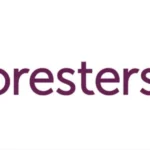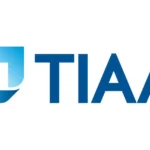Introduction
“Non-profits can boost their revenue through various methods like grants, donations, and fundraising events. Each option has its own benefits and challenges.”
Non-profit organizations are often associated with charitable work and community support, but they too need to generate revenue to sustain their activities and achieve their goals.
Understanding how to effectively make money from a non-profit business can be crucial for its longevity and impact. This article explores various revenue streams that non-profits can utilize, examining their benefits and challenges, and providing practical tips for implementation.
Grants and Funding

Grants and funding are primary sources of revenue for many non-profits. They come from various sources, including foundations, corporations, and government agencies. Securing grants requires a well-prepared proposal and a clear understanding of the grant-making organization’s priorities.
Benefits:
- Significant financial support: Grants can provide substantial funding, often covering large project costs.
- Non-repayable: Unlike loans, grants do not need to be repaid.
Challenges:
- Competitive process: Applying for grants can be highly competitive, with many organizations vying for limited funds.
- Time-consuming: Preparing and submitting grant proposals can be labor-intensive.
Tips:
- Research and target grants that align closely with your mission.
- Ensure that your proposals are detailed and tailored to each grant-giving organization’s requirements.
Donations
Donations are a vital part of non-profit revenue. They can come from individuals, families, or corporations and can be one-time or recurring.
Benefits:
- Flexible funding: Donations can be used for various purposes, depending on the donor’s wishes.
- Increased community support: Regular donations can build a loyal supporter base.
Challenges:
- Donor fatigue: Regular donors may become less engaged over time.
- Unpredictability: Donations can be irregular and hard to predict.
Tips:
- Develop strong relationships with donors through personalized communication.
- Utilize digital tools to make giving easier and more engaging.
Fundraising Events
Fundraising events are a great way to engage supporters and raise money. These can include galas, auctions, charity runs, and more.
Benefits:
- Community engagement: Events can raise awareness and attract new supporters.
- Event-specific revenue: Special events often generate significant revenue through ticket sales, sponsorships, and donations.
Challenges:
- High upfront costs: Organizing events can require significant initial investment.
- Resource-intensive: Planning and executing events can be time-consuming.
Tips:
- Plan events that align with your mission and appeal to your target audience.
- Use social media and other marketing tools to promote your events effectively.
Membership Fees
Membership fees involve individuals paying to join an organization, often in exchange for specific benefits or privileges.
Benefits:
- Steady income stream: Membership fees provide a reliable source of ongoing revenue.
- Engaged community: Members are often more engaged and supportive of the organization’s mission.
Challenges:
- Retention issues: Keeping members engaged and renewing their membership can be challenging.
- Value proposition: Ensure that the benefits offered justify the membership cost.
Tips:
- Offer clear, valuable benefits to members.
- Regularly communicate with members to keep them informed and involved.
Sales of Goods and Services

Non-profits can also generate revenue through the sale of goods and services. This can include items related to their mission or services they provide.
Benefits:
- Additional revenue: Selling goods and services can supplement other revenue streams.
- Market presence: This can increase the organization’s visibility and outreach.
Challenges:
- Operational costs: Managing sales can involve costs for production, inventory, and staffing.
- Mission alignment: Ensure that the goods or services sold align with your organization’s mission.
Tips:
- Focus on products or services that reflect your mission and values.
- Monitor sales performance and adjust offerings based on feedback and demand.
Sponsorships
Sponsorships involve businesses providing financial support in exchange for promotional opportunities.
Benefits:
- Mutually beneficial: Sponsors receive visibility, while non-profits gain funding.
- Potential for large contributions: Sponsorships can provide significant financial support.
Challenges:
- Alignment: Ensure that the sponsor’s values align with your organization’s mission.
- Dependence: Relying heavily on sponsorships can create financial instability.
Tips:
- Develop sponsorship packages that offer clear benefits to potential sponsors.
- Build and maintain strong relationships with sponsors to foster long-term support.
Endowments
Endowments are funds that are invested to generate income for the non-profit. The principal remains intact while the interest or investment returns are used for operations.
Benefits:
- Long-term stability: Endowments provide a stable source of funding over time.
- Financial security: They help ensure the organization’s sustainability.
Challenges:
- Initial funding: Establishing an endowment requires significant initial capital.
- Investment management: Managing and growing the endowment requires expertise.
Tips:
- Encourage large donations to build the endowment.
- Work with financial experts to manage and invest the endowment funds wisely.
Government Contracts
Government contracts provide funding for specific projects or services that the non-profit agrees to deliver.
Benefits:
- Substantial funding: Government contracts can provide significant financial resources.
- Mission alignment: Contracts often align with the organization’s mission.
Challenges:
- Bureaucracy: Dealing with government agencies can involve complex paperwork and regulations.
- Restricted use: Funds may be restricted to specific projects or purposes.
Tips:
- Stay informed about government funding opportunities and application processes.
- Ensure compliance with all regulations and reporting requirements.
Investments
Investments can provide additional revenue through interest, dividends, or capital gains.
Benefits:
- Potential for growth: Investments can yield significant returns if managed well.
- Diversified revenue: Adding investments can diversify your income sources.
Challenges:
- Risk: Investments come with inherent risks and can lead to losses.
- Expertise required: Managing investments requires financial knowledge and expertise.
Tips:
- Consult with financial advisors to develop an investment strategy.
- Regularly review and adjust your investment portfolio based on performance.
In-Kind Contributions
In-kind contributions are non-monetary donations, such as goods or services, provided to support the non-profit.
Benefits:
- Cost savings: In-kind donations can reduce operational expenses.
- Support variety: They can include anything from office supplies to professional services.
Challenges:
- Valuation: Assessing the value of in-kind contributions can be challenging.
- Acceptance: Ensure that the in-kind contributions are needed and usable.
Tips:
- Create a wish list of needed items and services for potential donors.
- Acknowledge and appreciate in-kind donors to maintain strong relationships.
Partnerships and Collaborations
Partnerships and collaborations involve working with other organizations or businesses to achieve common goals.
Benefits:
- Shared resources: Partnerships can provide access to additional resources and expertise.
- Enhanced impact: Collaborations can amplify the impact of your programs.
Challenges:
- Alignment: Ensure that all partners share similar goals and values.
- Coordination: Managing partnerships requires effective communication and coordination.
Tips:
- Seek partners with complementary skills and resources.
- Establish clear agreements and roles to avoid conflicts.
Crowdfunding and Peer-to-Peer Fundraising

Crowdfunding and peer-to-peer fundraising involve raising small amounts of money from a large number of people, typically through online platforms.
Benefits:
- Broad reach: These methods can attract a wide audience and engage new supporters.
- Flexibility: Funds can be raised for specific projects or needs.
Challenges:
- Campaign management: Successful crowdfunding requires effective campaign management and promotion.
- Platform fees: Many crowdfunding platforms charge fees for their services.
Tips:
- Develop a compelling campaign message and use social media to reach potential donors.
- Offer incentives or rewards to encourage contributions.
Importance of Making Money from a Non-Profit Business
Making money from a non-profit is crucial for several reasons. It allows the organization to:
- Sustain operations: Regular revenue ensures that the non-profit can continue its programs and services.
- Expand programs: Additional funding can enable the non-profit to reach more people and enhance its impact.
- Enhance stability: Diverse revenue streams can protect the organization from financial instability.
Can an RN Start an IV Hydration Business?
Additional Tips
To maximize revenue, consider the following additional tips:
- Diversify income sources: Relying on a single revenue stream can be risky. Diversify to stabilize finances.
- Build a strong brand: A well-recognized brand can attract more donors, sponsors, and partners.
- Engage supporters: Keep supporters informed and involved to build long-term relationships.
Pros and Cons
| Revenue Stream | Pros | Cons |
| Grants and Funding | – Significant financial support.<br>- Non-repayable. | – Highly competitive.<br>- Time-consuming process. |
| Donations | – Flexible use of funds.<br>- Builds community support. | – Can be irregular.<br>- Donor fatigue over time. |
| Fundraising Events | – Engages community.<br>- Potential for large revenue. | – High upfront costs.<br>- Time-intensive. |
| Membership Fees | – Steady income stream.<br>- Engaged community. | – Retention issues.<br>- Requires clear value. |
| Sales of Goods and Services | – Additional revenue.<br>- Increases market presence. | – Operational costs.<br>- Must align with mission. |
| Sponsorships | – Significant financial support.<br>- Promotional opportunities. | – Alignment issues.<br>- Dependence on sponsors. |
| Endowments | – Long-term stability.<br>- Financial security. | – Requires significant initial capital.<br>- Management expertise needed. |
| Government Contracts | – Substantial funding.<br>- Often mission-aligned. | – Bureaucratic processes.<br>- Restricted use of funds. |
| Investments | – Potential for growth.<br>- Diversifies revenue sources. | – Inherent risk.<br>- Requires financial expertise. |
| In-Kind Contributions | – Reduces operational expenses.<br>- Diverse support types. | – Valuation challenges.<br>- Usability concerns. |
| Partnerships and Collaborations | – Shared resources.<br>- Enhanced impact. | – Coordination needed.<br>- Alignment issues. |
| Crowdfunding and Peer-to-Peer Fundraising | – Broad reach.<br>- Engages new supporters. | – Management of campaigns.<br>- Platform fees. |
Answer to key Question
1. What is the most reliable source of revenue for non-profits?
The most reliable source of revenue can vary based on the organization’s mission
and target audience. However, membership fees and grants are often considered reliable sources due to their potential for steady, recurring income. Grants provide significant financial support, while membership fees ensure ongoing engagement from supporters. It’s advisable for non-profits to diversify their revenue streams to mitigate risks associated with dependence on a single source.
2. How can a non-profit organization increase its donation revenue?
To increase donation revenue, non-profits can:
- Build strong relationships with existing and potential donors through regular communication and engagement.
- Utilize digital platforms to facilitate online giving and automate recurring donations.
- Host fundraising events to attract new donors and encourage larger contributions.
- Leverage storytelling to highlight the impact of donations and create emotional connections.
3. What are some effective strategies for organizing successful fundraising events?
Effective strategies for organizing successful fundraising events include:
- Identifying clear goals for the event and understanding the target audience.
- Promoting the event through social media, email campaigns, and local media.
- Ensuring a well-planned event agenda with engaging activities and opportunities for networking.
- Following up with participants after the event to thank them and provide updates on how the funds are being used.
4. How can non-profits effectively manage their investments?
To effectively manage investments, non-profits should:
- Consult financial experts to develop a strategic investment plan that aligns with the organization’s goals and risk tolerance.
- Diversify investments to spread risk and maximize potential returns.
- Regularly review investment performance and adjust strategies as needed based on market conditions and organizational needs.
- Ensure transparency in investment decisions and management to maintain trust with stakeholders.
5. What are some best practices for applying for grants?
Best practices for applying for grants include:
- Researching and identifying grants that align with the organization’s mission and goals.
- Developing a detailed and compelling proposal that clearly outlines the need, objectives, and impact of the project.
- Following application guidelines meticulously to ensure compliance with the grant-making organization’s requirements.
- Building relationships with grantmakers by engaging with them before applying and keeping them informed about the organization’s progress.
Sales of Goods and Services
| Type of Goods/Services | Description | Benefits | Challenges | Tips |
| Merchandise | T-shirts, mugs, and other branded items. | Promotes organization, additional revenue. | Initial investment in production. | Focus on high-quality, appealing items. |
| Event Tickets | Tickets for concerts, galas, or workshops. | Generates revenue, raises awareness. | Requires effective event planning. | Promote through multiple channels. |
| Consulting Services | Expertise offered in areas related to mission. | Utilizes organizational expertise. | Requires skilled staff and resources. | Market services to relevant clients. |
| Online Courses | Educational content or training. | Scalable revenue source, engages audience. | Requires content development and tech. | Offer valuable, high-quality content. |
| Art and Crafts | Handcrafted items or art related to mission. | Unique revenue source, showcases creativity. | Managing inventory and production costs. | Highlight the mission connection in marketing. |
Conclusion
Making money from a non-profit business involves exploring various revenue streams, each with its own benefits and challenges.
By leveraging grants, donations, fundraising events, membership fees, and other strategies, non-profits can achieve financial stability and enhance their impact.
Understanding these methods and implementing effective strategies will help non-profits sustain their operations and continue making a difference in their communities.

Hi! I’m Semuel Adams. I’m a business expert and author at SkyVoxes. With a Master’s degree in Business, I’m passionate about sharing practical advice and strategies to help businesses thrive. My goal is to make complex business concepts easy to understand and apply. If you have any tips or information about business you can share with me, I w’ll add this important information in my content.










